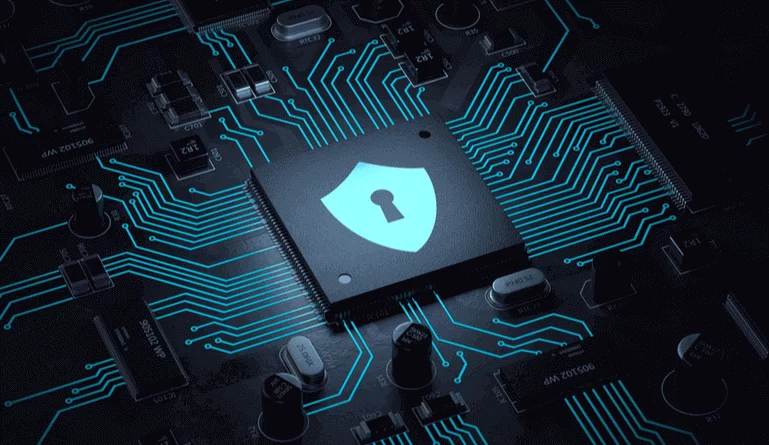Definition of hardware security means the protection that is provided to physical devices. This protection is provided to prevent any sort of unauthorized access to enterprise systems.
Talking about everyday operations, it is very critical to protect hardware devices as much as it is important to protect the software. However, lately, it has been observed that the security of physical devices is often neglected. The article shares insights on potential threats to hardware and the best practices that can be incorporated to secure them.
What is hardware security?
Protecting your physical devices to ensure that no one tries to access these devices without permission is termed hardware security. Hardware security falls under the domain of enterprise security, primarily targeting the protection of machines, peripherals, and physical devices. The protection can take many forms such as deploying security guards, CCTV cameras, and even locked doors.
The other way of securing hardware components will be by creating cryptographic or encryption-based functions using an integrated circuit, that protects the devices from any sort of security vulnerabilities and kicks out the attackers. To put it in simple terms, hardware security is more about security devices physically or through some operational methods, and not by deploying any antivirus.
When we talk about physical security, it points in the direction of securing on-premise devices from any sort of human tampering or destruction. In today’s scenario, this is far more necessary considering that there is a potential threat to machine-to-machine (M2M) devices or IoT (internet of things) devices.
A very typical example of hardware security will be a physical device that scans employee access points or tracks network traffic; for instance a hardware firewall or probably a proxy server. Another way of achieving hardware security is through hardware security modules, also known as HSM. HSMs are basically devices that encrypt and secure enterprise systems by generating and managing cryptographic keys used for authentication.
Yes, there are software-based methods available to secure almost all kinds of enterprise environments, however, when it comes to hardware it is advisable to have hardware security for those architectures, which are responsible for connecting multiple hardware devices.
Potential security gaps can be exploited by attackers when a hardware device is engaged in an operation or executing a code or probably receiving an input. Any physical device that gets connected to the internet, needs protection from attackers.
Critical hardware devices such as servers and employee endpoints require strong security measures and protection to ensure that there is no hurdle in day-to-day operations. These devices also face threats from internal users, making it imperative for organizations to create a strong and robust internal hardware security policy.
10 Threats to Enterprise Hardware Today
If we talk about various sources of threats to enterprise hardware we can talk about firmware, BIOS, network cards, Wi-Fi cards, motherboards, graphic cards, and the list is a never-ending one.
An organization consists of a multitude of hardware devices and components and each one of them has its own share of vulnerabilities. This makes hardware security not only critical but also a complicated process. Let us look at the top 10 enterprise hardware threats:
1. Outdated firmware
Let us accept a fact that not every organization provides a foolproof smart device. There may be local manufacturers who provide IoT devices such as HVAC and RFID devices among others that may come with firmware full of bugs. Moreover, if organizations don’t do a proper deployment of security patches, it can compromise the hardware device.
2. Lack of encryption
We are seeing a large number of hardware devices moving towards being IP-oriented. However, there is still a considerable number of devices that are not connected to the internet using proper encryption protocols. It is to be noted here that encryption for data at rest and data at motion is vital. Any information that is not encrypted with the right set of protocols can be collected by attackers and used to forcefully access your enterprise environment
3. Unsecured Local Access
Usually, hardware devices such as IoT and IIoT devices are accessed either through a local network or via an on-premise interface. Small organizations may tend to neglect the level of access and end up with the improper configuration of the local network or local access points, rendering the devices vulnerable.
4. No change in default passwords
Almost all enterprise devices come with a default password, which can be changed and must be changed. However, many organizations, even those who are technologically far advanced and secure, may end up compromising the devices by ignoring this fundamental factor.
5. Customized hardware
Many organizations, because of the nature of their business operations, rely on customized hardware. For instance, corporate data centers and custom-built applications for heavy engineering and for scientific purposes. Since the chips used in these devices are tailor-made, sometimes the manufacturers tend to overlook the security aspects of these chips, exposing them to vulnerabilities.
6. Backdoors
Backdoors are nothing but a vulnerability that is purposefully inserted in a hardware device, but it stays hidden. The manufacturers usually insert this with the intention of accessing the enterprise environment the moment the device is connected to it, of course, without the consent of the owner of the device.
7. Modification Attacks
These are primarily used for invading the regular and normal operation of a hardware device and permit bad actors to override any sort of restriction on the hardware device. A modification attack basically modifies the communication protocol of the engaging hardware device.
8. Eavesdropping
This type of attack happens when an unauthorized entity or party accesses the hardware device and steals all the data in it. An eavesdropping attack can be easily performed even if the attacker does not have a continuous connection to the said hardware device.
9. Counterfeit Hardware
This is a threat that is constantly present for ages, making it easy for attackers to target enterprises, rather easily. Here, enterprises are sold devices that are not authorized by the original equipment manufacturers (OEM) creating opportunities for backdoor vulnerabilities.
10. Trigger faults
Here, attackers can easily induce faults in the hardware device, thereby disrupting the normal behavior of the device. Through fault attacks, system-level security can be compromised thereby causing leakage of data.
Best Practices for Hardware Security
While there are threats constantly hovering around hardware security, there are best practices that can help in protecting your hardware devices. Here are seven such best practices that organizations can follow
- Study the hardware supplier
- Encrypt all possible hardware devices
- Implement sufficient electronic security
- Minimize the attack surface
- Ensure strong physical security
- Have a real-time monitoring mechanism
- Perform periodic and regular audits.
Final Thoughts
With these measures, organizations can certainly secure their hardware from any potential threats. Of course, it is needless to say that the attackers constantly find innovative ways to breach the device, but these best practices also undergo continuous evolution, thereby making the life of attackers difficult.





